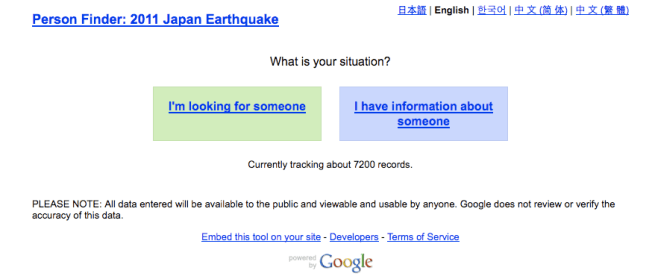 In just under three hours after the 8.9 magnitude earthquake in Japan, Google had its Person Finder service up and running. The app lets people report someone as missing or report someone who has been found.
In just under three hours after the 8.9 magnitude earthquake in Japan, Google had its Person Finder service up and running. The app lets people report someone as missing or report someone who has been found.
The website is setup in both a Japanese and English version and includes the warning: “All data entered will be available to the public and viewable and usable by anyone. Google does not review or verify the accuracy of this data.”
Within two hours of launching, the service had gained 2,000 entries from people reported missing, or from people who had been reported alive. As of 11:00 AM EST the service was tracking some 7,200 entries.
Google used a similar service following the recent earthquake in Christchurch, New Zealand and following last year’s quakes in Haiti and Chile.

Google also posted a tsunami warning on its homepage, warning of danger in the Pacific region caused by the earthquake in Japan. Earlier in the morning the homepage contained a more direct warning: “Tsunami Alert for New Zealand, the Philippines, Indonesia, Papua New Guinea, Hawaii, and others. Waves expected over the next few hours, caused by 8.9 earthquake in Japan.”


